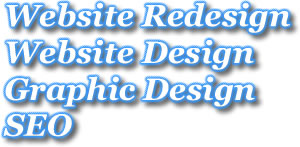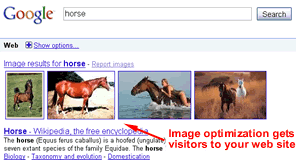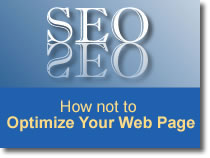
* Why hire a web designer when there are 100s of template designs on the Net?
* Why invest money in a web designer when you can download a free template?
* Why wait weeks or months to have a site designed when you can get a ready-made template?
These are some of the frequently asked questions business owners have when deciding on building a website to sell their products and/or services.
7 top reasons to hire a web designer
1. Professional knowledge
A professional web designer who has been designing websites for 10 years has accumulated a ton of knowledge about what works well on the Net. He will be familiar with the common mistakes new site owners make when establishing an online presence and will know how to design a profitable website.
2. Customized design
If you want your site to stand out from your competitors you should not use a template. Chances are many other online users will have the same design. A customized website enables you to have a unique design that matches what you’re selling.
3. Less costs in the long term
A professional design can be less expensive in the long run because it was built with a solid foundation. This means it contains clean code, the web pages load quickly and are search engine friendly. Templates often contain proprietary code that contains html errors, loads slowly and are not optimized for the search engines.
4. Search engine optimization
A professional web designer will make sure your web pages are optimized for the search engines. This means the pages will validate for correct html, css, contain appropriate meta tags, heading tags, descriptive file names, clear navigational structure and image descriptions. Even though you may find a pretty template you won’t understand what’s in the code underneath the design unless you’re a web designer.
5. Familiar with marketing strategies
A beautiful website will not attract visitors on its own. It needs to be marketed frequently and consistently to generate a continuous stream of traffic. A professional web designer can help you implement powerful traffic generation strategies.
6. Website maintenance
Business owners often don’t have the time, knowledge or desire to update their websites. They prefer to have a webmaster who knows what they are doing and can quickly and easily add new content whether it’s text, videos, audios or images. The web designer can also install scripts to capture email addresses, add a forum, blog, RSS feeds or social media tools. He or she can track the progress of the website by monitoring site statistics.
7. Cross browser compatibility
If your website doesn’t display correctly in all the major browsers you’ll miss out on lots of visitors. A web designer will make sure your site appears correctly in Internet Explorer, FireFox, Safari and Chrome.
When you buy a template you may save time and money in the short term however it may cost you dearly in the long term. Hiring a professional web designer will guarantee a top notch design that will help brand your business and give you peace of mind knowing that it’s been built correctly.
****************
Get a professional website designed for your business by visiting:
Professional Website Design



